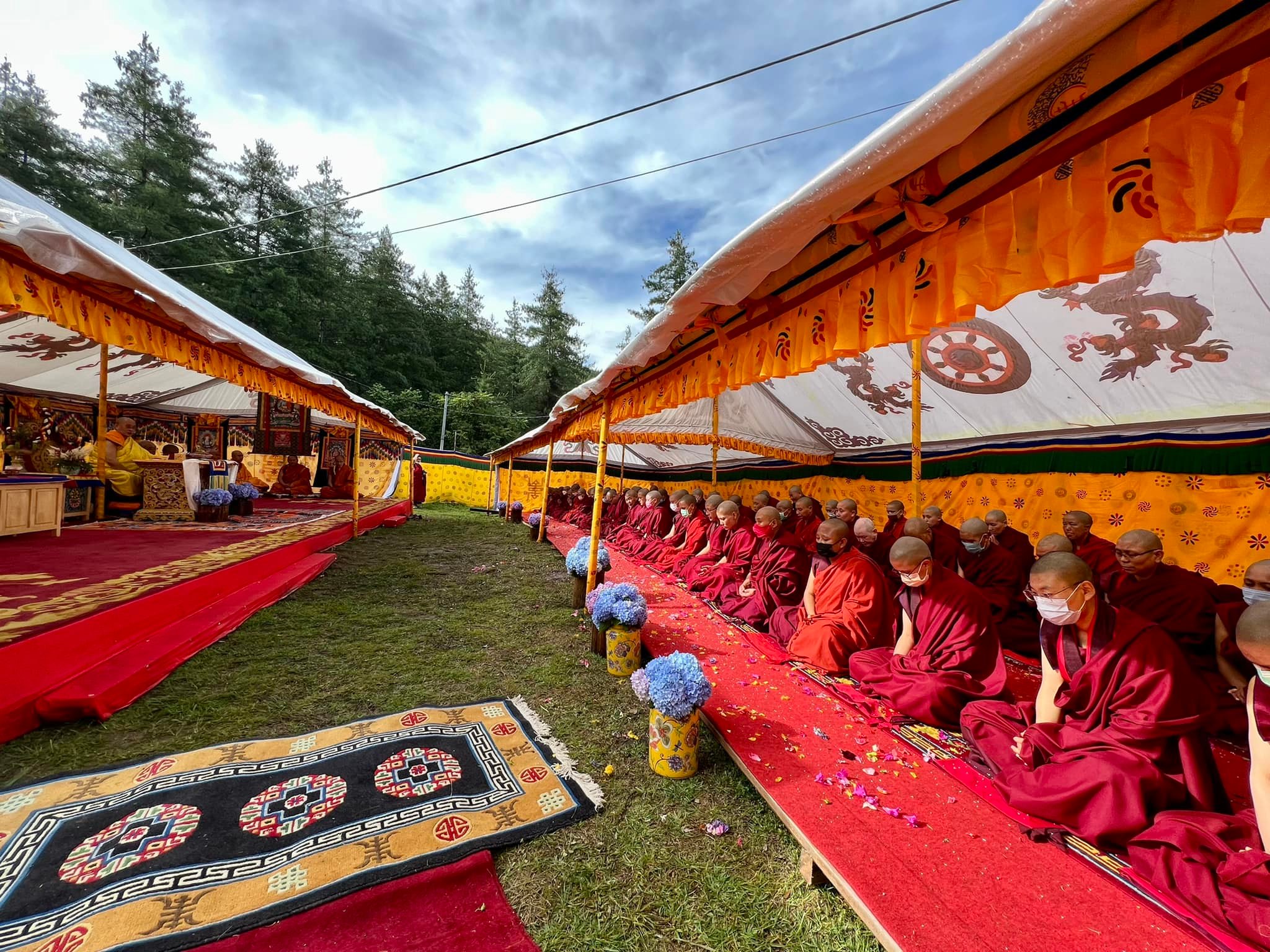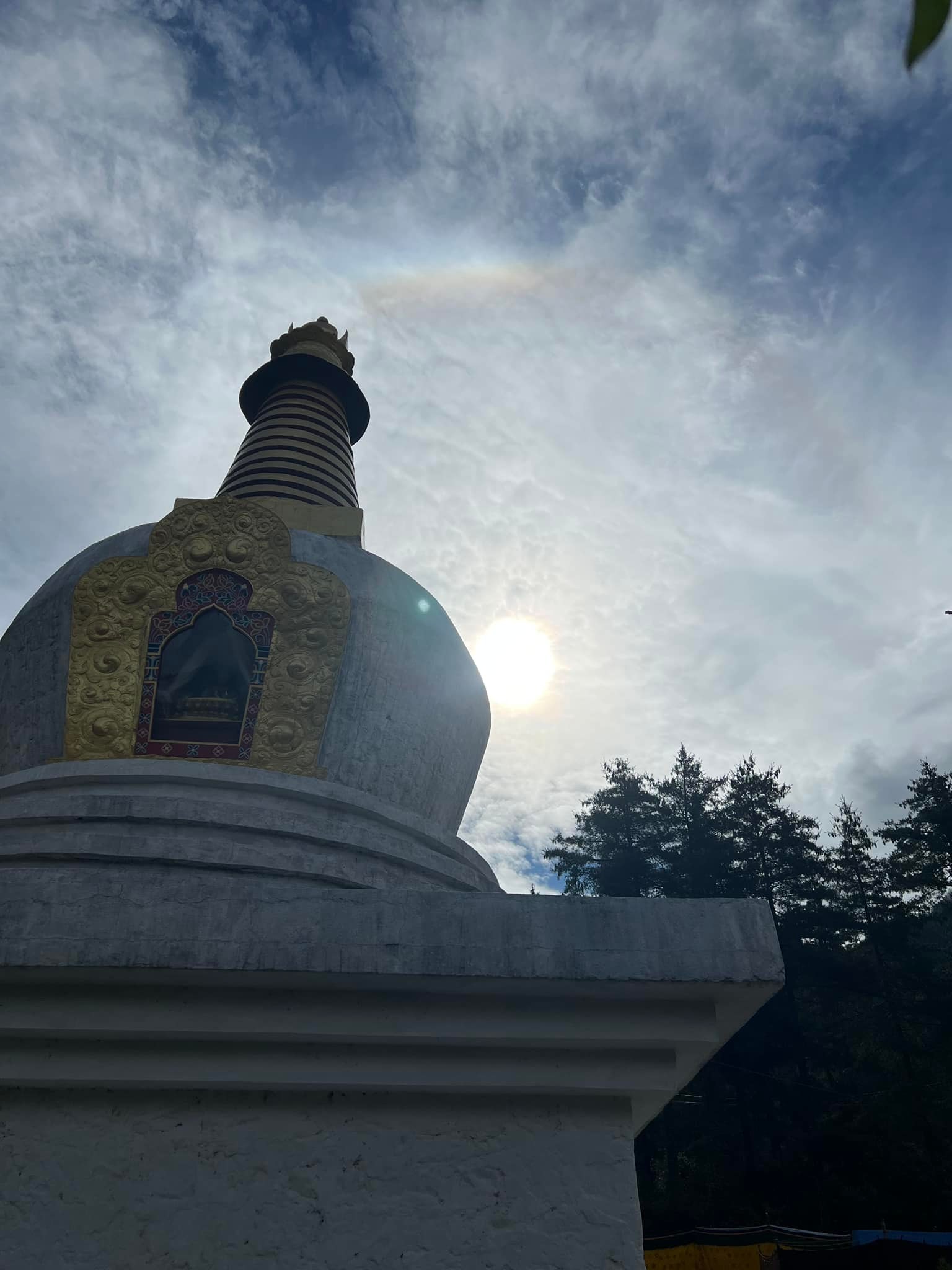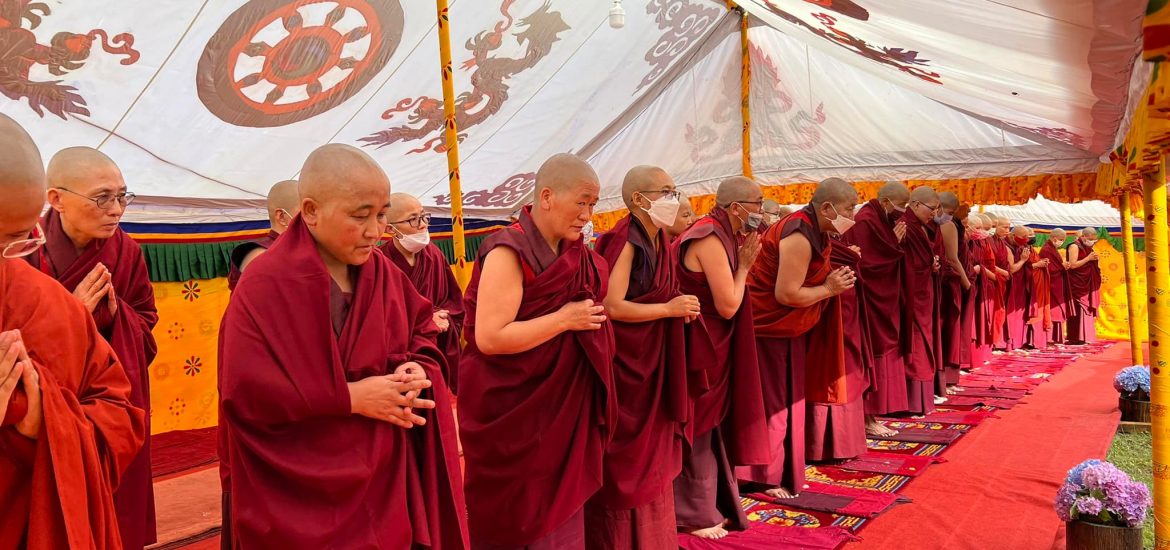Images courtesy of the Zhung Dratshang (Central Monk Body of Bhutan)
“Perhaps we might also consider the fact that the prophecy that the teachings duration would be shortened by 500 years may have been Buddha’s forseeing the degeneration of the status of fully ordained nuns and their inferior treatment by the monks, which itself would lead to the degeneration of the teachings? It was not the fact that women became nuns that was the issue, but that monks would treat them so badly?”
(Dakini Translations)
21 June is an auspicious day. It is the summer solstice across world, heralding the longest day of the year, and in Bhutan, corresponds to the 23rd day of the 4th lunar month. It also is the birthday of Her Majesty Gyalyum Tshering Yangdoen Wangchuck, indicating that this was the right date for a landmark event: the full ordination of 144 Buddhist nuns.
In a Facebook post and on other media platforms, the Bhutan Nuns Foundation and the Central Mon Body of Bhutan announced that His Holiness the Je Khenpo was conferring the Gelongma vows to about 144 female monastics at Ramthangkha, Paro. The nuns receiving the vows were not only from Bhutan, but also from neighboring countries like Nepal and India. Her Majesty and members of the Bhutanese royal family attended the group ordination, along with Their Eminences the Dorji Lopen, Tshog-ki Lopen, and Laytshog Lopen.
The Gelongma vows are those of a truly ordained nun – a proper, full bhikshuni: and as such, mark another occasion where, despite ongoing disputes about the theoretical legality of bhikshuni ordination, the female lineage in the Vajrayana tradition is re-established. At this point, the wrangling over the Mulasarvastivada Vinaya’s severed lineage for women is largely academic. Susanne Mrozik, associate professor of religion at Mount Holyoke College, was unambiguous about the significance of this event: “This historic ordination ceremony may well create further pressure on other Buddhist communities in different countries to make full ordination available to nuns within Tibetan Buddhism.” (Religion News Service)

At Ramthangkha, the nuns faced the Je Khenpo and several other monastic authorities, who oversaw the undertaking of the vows. The Dakini Translations website notes: “. . . as the Bhikṣuṇī vows arose in dependence on the male sangha of fully ordained monks, it became (and is) acceptable and part of past tradition in Tibet for the male sangha alone to give the fully ordained vows to women.” (Dakini Translations) This, along with the tendency to seek other routes through which to ordain fully under a bhikshuni sangha, led to a general perception that the revival of a true nuns’ order could only come incrementally, at the smaller scale, largely confined to small ecumenical ordinations (particularly under Mahayana nuns).
No more. As Haley Barker writes about this event, “. . . in Bhutan, a handful of monks have taken ordination into their own hands and provided ordination to nuns without the presence of bhikshunis. Typically, this ceremony is only granted to a small number of women, and never on the scale seen on Tuesday. According to Finnegan, an ordination this large guarantees a sangha, or bhikshuni community, that will persist well into the future.” (Religion News Service)

Auspicious signs, such as rainbows encircling the sun, could be witnessed as the ordination ceremony commenced and concluded smoothly. What a truly blessed day, one that has immense implications for the future of women in Buddhism. The Vajrayana bhikshuni order, the women’s Buddhist Order in its truest sense, has been resuscitated on a scale that can no longer be corseted by academic wrangling over broken Vinaya transmissions.
See more
‘LIKE STARS IN THE DAY’, THE DESCENT OF FEMALE ARHATIS: FULLY ORDAINED TIBETAN BUDDHIST NUNS IN TIBET, PAST, PRESENT AND FUTURE (17th Karmapa Spring Teachings (Day 13) (Dakini Translations)
Buddhist leader in Bhutan fully ordains 144 women, resuming ancient tradition (Religion News Service)

